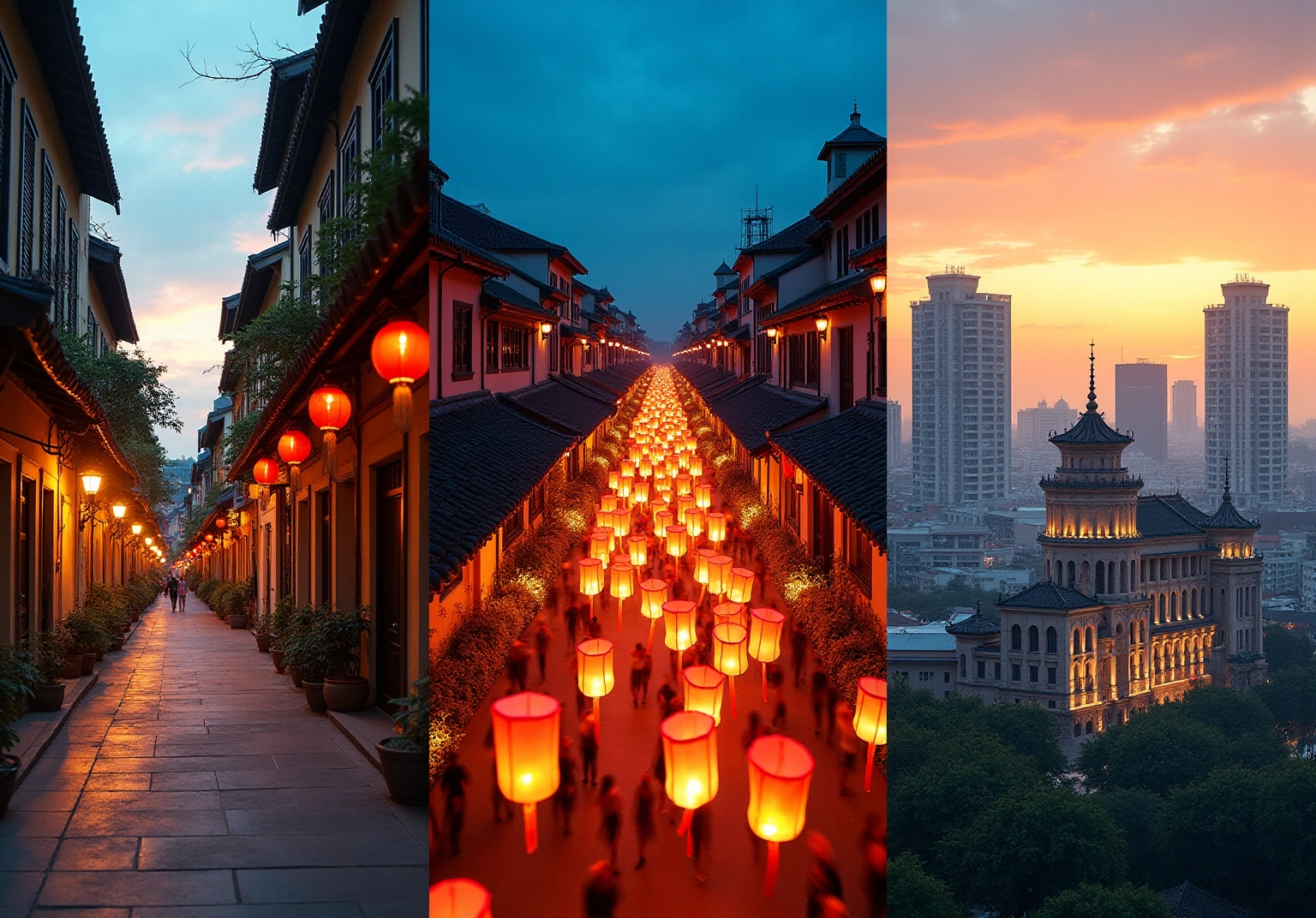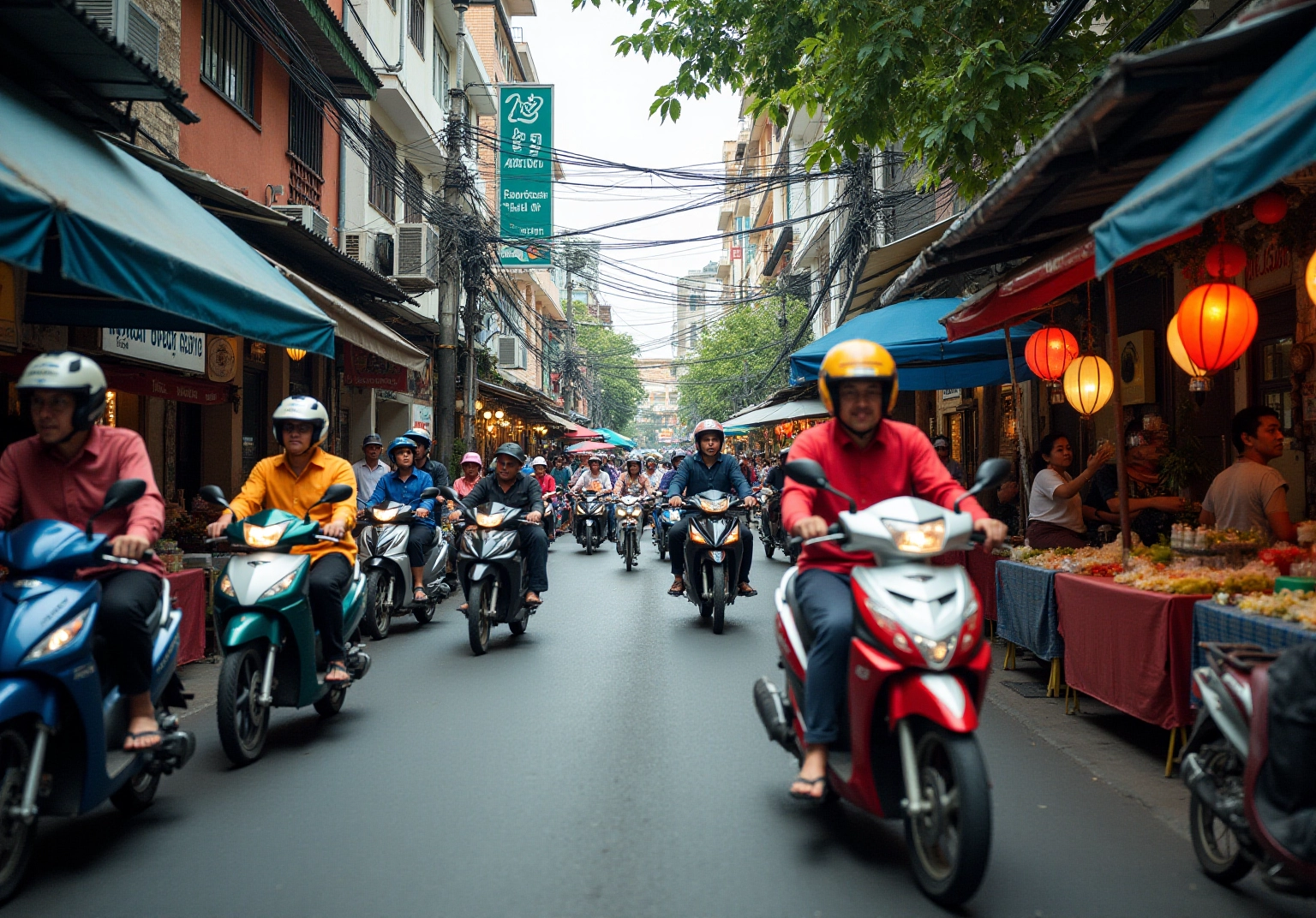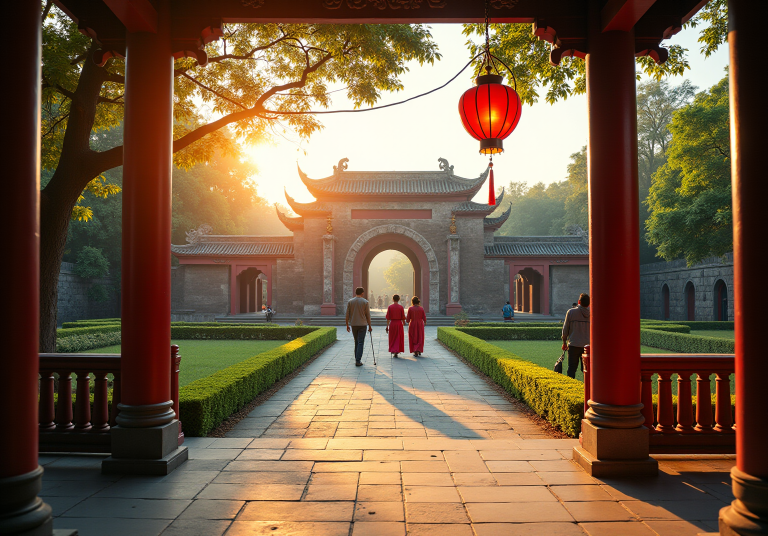Overview
This article shines a light on five must-visit areas in Vietnam that every design enthusiast will adore!
Picture yourself exploring the vibrant cities of Hanoi, Hoi An, and Ho Chi Minh City, each bursting with architectural charm and rich cultural heritage.
As you dive into the local crafts and historical landmarks, you’ll discover initiatives that promote sustainable tourism, beautifully showcasing Vietnam’s unique blend of traditional and modern design influences.
It’s a journey filled with inspiration and creativity that you won’t want to miss!
Key Highlights:
- Vietnam’s heritage is influenced by various civilizations, including Chinese, French, and indigenous cultures.
- The Imperial City of Hue is a UNESCO World Heritage site showcasing Vietnamese architectural grandeur.
- Local museums highlight traditional crafts like lacquerware and silk weaving, reflecting intricate artistry.
- The ‘A Thousand Years of Storytelling’ initiative promotes live performances in Hue, enhancing cultural narratives.
- Vietnam is promoting green tourism, aiming for a sustainable and welcoming environment by 2025.
- Key cities for design exploration include Hanoi, Hoi An, and Ho Chi Minh City, each with unique architectural and cultural offerings.
- Travel apps can enhance navigation and help discover local galleries and workshops.
- Engaging with artisans through workshops fosters a deeper connection to Vietnamese culture and supports local communities.
- Travelers should prepare for challenges like language barriers and local customs to ensure a smooth experience.
- Safety tips include being cautious in traffic, securing belongings in crowded areas, and having reliable travel insurance.
Introduction
Vietnam’s cultural and design heritage is a vibrant mosaic, intricately woven through centuries of history and diverse influences. Picture yourself exploring the majestic architecture of the Imperial City of Hue or admiring the delicate artistry of traditional crafts—this rich legacy truly invites exploration and appreciation! As you delve into the heart of Vietnam, you’ll uncover a world where ancient traditions meet contemporary creativity. Engage with local artisans and experience the fascinating stories behind each masterpiece.
What’s even more exciting is Vietnam’s commitment to sustainability and green tourism. Not only does it preserve its past, but it also paves the way for a future that honors its unique identity. Whether you’re wandering through bustling cities or tranquil villages, your journey through Vietnam’s design landscape promises to be an unforgettable adventure. So, are you ready to discover something new?
Discover Vietnam’s Cultural and Design Heritage
The heritage of this Southeast Asian nation is like a rich tapestry woven from centuries of history and the influences of various civilizations, including Chinese, French, and indigenous cultures. If you want to truly appreciate Vietnam’s artistic philosophy, you’ve got to explore its architectural marvels, traditional crafts, and the stories that accompany them. A visit to the Imperial City of Hue, a UNESCO World Heritage site, is a must! It beautifully exemplifies the grandeur of Vietnamese architecture and its historical significance.
Local museums are treasure troves of traditional crafts, such as lacquerware and silk weaving, showcasing the intricate artistry that defines Vietnamese culture. You can deepen your understanding by diving into literature and documentaries that examine the evolution of Vietnamese design—it’s a fascinating journey!
Exciting initiatives, like the ‘A Thousand Years of Storytelling’ series in the Menas Zone Vy Da, aim to evoke the spirit of Hue through live artistic performances, enriching the narrative of the area. Plus, the municipal Department of Tourism is all in on promoting green tourism, with plans to create a ‘green, clean, beautiful, civilized, and friendly’ destination by 2025. This focus on sustainability shows a growing awareness of the importance of preserving heritage while welcoming tourists.
Statistics reveal that the nation’s architectural history is not just a reflection of its past; it lays the groundwork for its future, with key influences shaping modern practices. By engaging with the heritage of this vibrant land, you’ll develop a deeper appreciation for the artistry and stories that continue to inspire and characterize Vietnam.
Plan Your Itinerary: Key Cities for Design Exploration
To explore the dynamic creative landscape of areas of Vietnam, focus on its major cities known for their architectural and artistic significance. Start your adventure in Hanoi, the capital, where the Ho Chi Minh Mausoleum and the Old Quarter showcase stunning colonial architecture found in many areas of Vietnam. The Old Quarter, with its narrow streets and historic buildings, gives you a glimpse into the city’s rich past.
Next up is Hoi An, one of the notable areas of Vietnam, celebrated for its well-preserved Ancient Town, a UNESCO World Heritage site, and its enchanting lantern festivals that light up the streets at night, creating a magical atmosphere.
Don’t miss Ho Chi Minh City, which is one of the most bustling areas of Vietnam. In the areas of Vietnam, modern skyscrapers stand proudly alongside historic landmarks like the Saigon Notre-Dame Basilica, reflecting a vibrant blend of old and new. To make the most of your experience, craft a flexible itinerary that allows for spontaneous exploration. This way, you’ll have plenty of time to discover nearby galleries, artisan workshops, and unique design boutiques in various areas of Vietnam.
Using travel apps can really enhance your journey by helping you navigate public transport and uncover hidden gems throughout these cities. For instance, the Hang Trong Folk Painting Experience in Hanoi offers visitors a chance to engage with the last master of this nearly lost craft, giving you insight into its cultural significance and fostering a deeper appreciation for Vietnamese heritage. Plus, consider incorporating local culture into your travel experience by wearing traditional attire or using props that reflect the local environment in your photos.
With such diverse options, as Sophie observed, “This country truly caters to every type of traveler!” It’s a perfect destination for creative enthusiasts.

Engage with Local Artisans: Experience Authentic Design
To truly dive into the vibrant design culture of the country, why not seek out opportunities to interact with regional artisans? Participating in workshops where you can learn traditional crafts—like pottery in Bat Trang or silk weaving in Hoi An—can be an incredible experience!
Imagine visiting artisan villages in the areas of Vietnam, particularly in the Mekong Delta, where you can witness the craftsmanship behind handmade products firsthand. Not only will you gain practical skills, but you’ll also have the chance to buy unique keepsakes directly from the creators, ensuring your support goes back to the community.
Don’t forget to document your adventures through photography and journaling; capturing the essence of these interactions will make your memories even more special!
Navigate Challenges: Tips for a Seamless Travel Experience
Exploring the country opens up a rich tapestry of experiences, but being prepared for potential challenges is crucial! Understanding local customs and etiquette is key to avoiding misunderstandings. For instance, greeting locals with a smile and a slight bow can really foster goodwill.
You’ll find that language barriers are quite common, with about 80% of the population speaking Vietnamese. This makes translation apps or a handy phrasebook invaluable tools for effective communication! It’s also important to recognize that emergency numbers in the country may be unreliable and are mainly operated in the local language, which can complicate matters during urgent situations.
Navigating the bustling streets, especially in cities like Ho Chi Minh City, requires a bit of vigilance due to the prevalence of motorbikes. Traffic can get chaotic, so always look both ways before crossing and consider using pedestrian bridges where available. Plus, securing your belongings is vital, particularly in crowded markets and tourist hotspots, where theft can happen more often than you’d like.
Having travel insurance that includes health and safety is essential! It offers peace of mind as you dive into the vibrant landscapes and rich culture of the country. Recent reports highlight the importance of obtaining a police report when reporting a crime, as those emergency numbers may not be reliable. By staying informed and prepared, you can navigate the unique challenges present in the areas of Vietnam and truly enjoy a seamless travel experience.
As travel experts Sidney and Thao Van Meenen say, “Whether you are traveling solo, with friends, or with your family; whether you are young or old; whether you want adventure and excitement or rest and relaxation, we’ll have single tour options or complete tailored travel packages for you!

Conclusion
Vietnam’s cultural and design heritage is a captivating blend of history and artistry that beckons you to explore! From the architectural splendor of the Imperial City of Hue to the intricate craftsmanship found in local artisan workshops, each aspect of Vietnamese design tells a unique story. Engaging with local traditions and participating in hands-on experiences not only enriches your understanding but also fosters a deeper connection to the community and its history.
Traveling through key cities like Hanoi, Hoi An, and Ho Chi Minh City unveils a diverse tapestry of influences that shape contemporary design. You’re encouraged to immerse yourself in the local culture—whether by exploring vibrant markets or attending enchanting lantern festivals. The emphasis on sustainable tourism and preservation of cultural heritage underscores Vietnam’s commitment to honoring its past while embracing a greener future.
As you navigate the challenges of travel, such as language barriers and bustling streets, preparation and awareness can transform potential obstacles into enriching experiences. By embracing the vibrant design landscape and the stories behind each creation, you’ll leave Vietnam not just with beautiful souvenirs, but with lasting memories and a profound appreciation for a culture that continues to inspire creativity and innovation.
Frequently Asked Questions
What influences have shaped Vietnam’s cultural heritage?
Vietnam’s cultural heritage has been shaped by various civilizations, including Chinese, French, and indigenous cultures, resulting in a rich tapestry of history.
What are some key architectural sites to visit in Vietnam?
The Imperial City of Hue is a must-visit site, recognized as a UNESCO World Heritage site, exemplifying the grandeur of Vietnamese architecture and its historical significance.
What traditional crafts can be found in Vietnam?
Traditional crafts in Vietnam include lacquerware and silk weaving, which showcase the intricate artistry that defines Vietnamese culture.
How can one learn more about Vietnamese design and culture?
To deepen your understanding of Vietnamese design, you can explore literature and documentaries that examine the evolution of its artistic philosophy.
What initiatives are promoting cultural storytelling in Vietnam?
The ‘A Thousand Years of Storytelling’ series in the Menas Zone Vy Da aims to evoke the spirit of Hue through live artistic performances, enriching the narrative of the area.
What is the focus of Vietnam’s municipal Department of Tourism regarding tourism?
The municipal Department of Tourism is promoting green tourism with plans to create a ‘green, clean, beautiful, civilized, and friendly’ destination by 2025, emphasizing sustainability and heritage preservation.
How does Vietnam’s architectural history impact its future?
Vietnam’s architectural history lays the groundwork for its future, with key influences shaping modern practices and contributing to the ongoing appreciation of its artistry and stories.


































